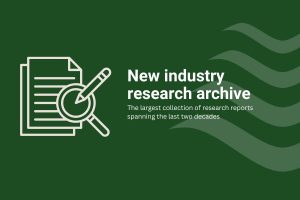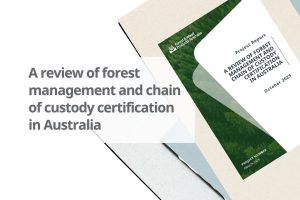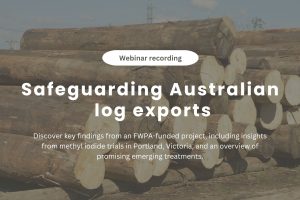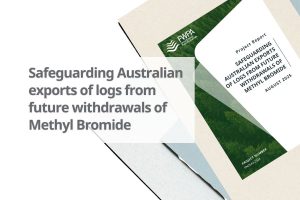150 speakers addressed more than 450 delegates during what proved to be Forestry Australia’s biggest ever conference, with more than 50 hours of exciting and thought-provoking content.
One of the many highlights on the program was a session titled Forest health and biosecurity — a good news story. During the session leaders in the field of Australian forest health and biosecurity came together to highlight the array of important research projects currently underway in this space and discuss broader implications of this type of research for the forestry industry.
“The conference was a great opportunity for sharing knowledge and collective efforts to better protect our forests and grow our industry,” said FWPA Forest Research Manager Jodie Mason.
During the session, Mason spoke to delegates about the need for increased investment in forest research, in light of sobering statistics including a decrease of 80 per cent in funding, and a 95 per cent drop in the number of forest researchers during the past decade in Australia.
To address these issues, Mason told attendees about the work of the Grower Research Advisory Committee, comprised of industry members, and which developed eight investment plans to inform and promote future investment in forest research.
Once the investment plans were finalised, it was estimated that a budget of $53 million over five years would deliver a potential $700 million of financial benefit to the industry. More than $10 million has already been invested in identified priority projects, thanks to funding from industry and the Australian government.
The ‘damage agents’ investment plan specifically was outlined during Mason’s presentation, and its focus on agreed priorities for forest health and biosecurity research. The plan includes research around environmental influences like drought and heatwaves, and long-established physical pests like sirex, leaf beetle, eucalypt weevil and browsing animals, as well as newly established pests such as myrtle rust and giant pine scale.
“The damage agents investment plan identifies RD&E priorities to address current and emerging forest health and biosecurity issues. Tackling these threats is essential for the Australian forest industry to thrive. It’s great to see the industry taking up the challenge with increased levels of investment in these areas,” said Mason.
Also during this session, delegates heard about an FWPA-funded project looking at the biological control of giant pine scale (a sap-sucking insect also known as GPS) in Australia. Greg Lefoe of Agriculture Victoria, which led this research, detailed the risks and benefits of introducing a specialised predator species, Neoleucopis kartliana, from its native Greece to help combat GPS.
This research indicated that, if approved, the predatory fly could be a “long-term, cost-effective and environmentally friendly management option for GPS in Australia,” according to Lefoe.
Other presenters included Dr Louise Shuey from the QLD Department of Agriculture and Fisheries, who spoke on the devastating impacts of myrtle rust on Australian ecosystems, and the vulnerability of trees to infection following intense fire events. This work was part of a project lead by Geoff Pegg and funded by the Plant Biosecurity Science Foundation and the Threatened Species Recovery Hub.
Meanwhile, Dr Angus Carnegie of the NSW Department of Primary Industries and Paco Tovar of Plant Health Australia each discussed work to harness the potential of urban and peri-urban trees to act as early detection ‘sentinels’ for invading pests and diseases.
Carnegie’s work focused on using aerial imagery and remote sensing to model trees, while Tovar highlighted the main activities planned for the National Forest Pest Surveillance Program. The program includes the development of a mobile app that enables stakeholders like local government, botanic garden staff and arborists to become a first line of defence in spotting and reporting exotic forest pests and disease early in high-risk areas.
Dr Simon Lawson, from the University of the Sunshine Coast spoke about research projects focusing on the benefits of collaboration with neighbours in south-east Asia around forest health, while Conrad Trollip from Agriculture Victoria/La Trobe University, presented his PhD research on improving species-level detection of fungi caught via surveillance traps.
The forest health and biosecurity session was a collaboration between industry and program partners, including FWPA, Plant Health Australia, Agriculture Victoria, NSW Department of Primary Industries, Queensland Department of Agriculture and Fisheries and University of the Sunshine Coast.
Most projects presented in the session have been funded by a combination of government, academic and industry partners.
“The forest health session showcased the benefits of research investment,” said Mason.
More generally on the conference, Forestry Australia CEO Jacquie Martin commented, “The levels of interest and engagement, and quality of speakers and presentations demonstrates that the future of forestry in Australia is in great hands!”
If you missed out on the conference this year, a conference report will be published in the next edition of The Forester.



